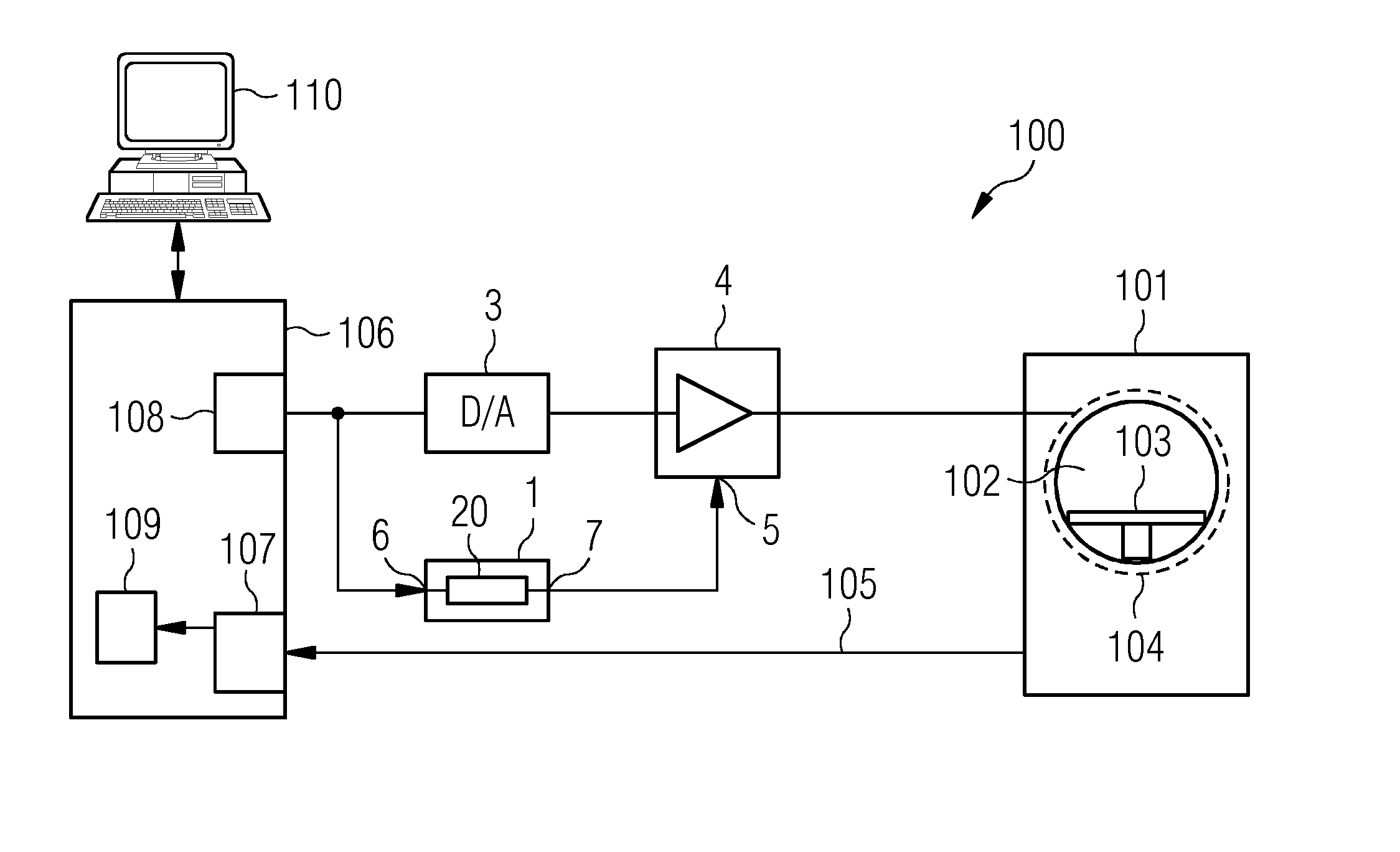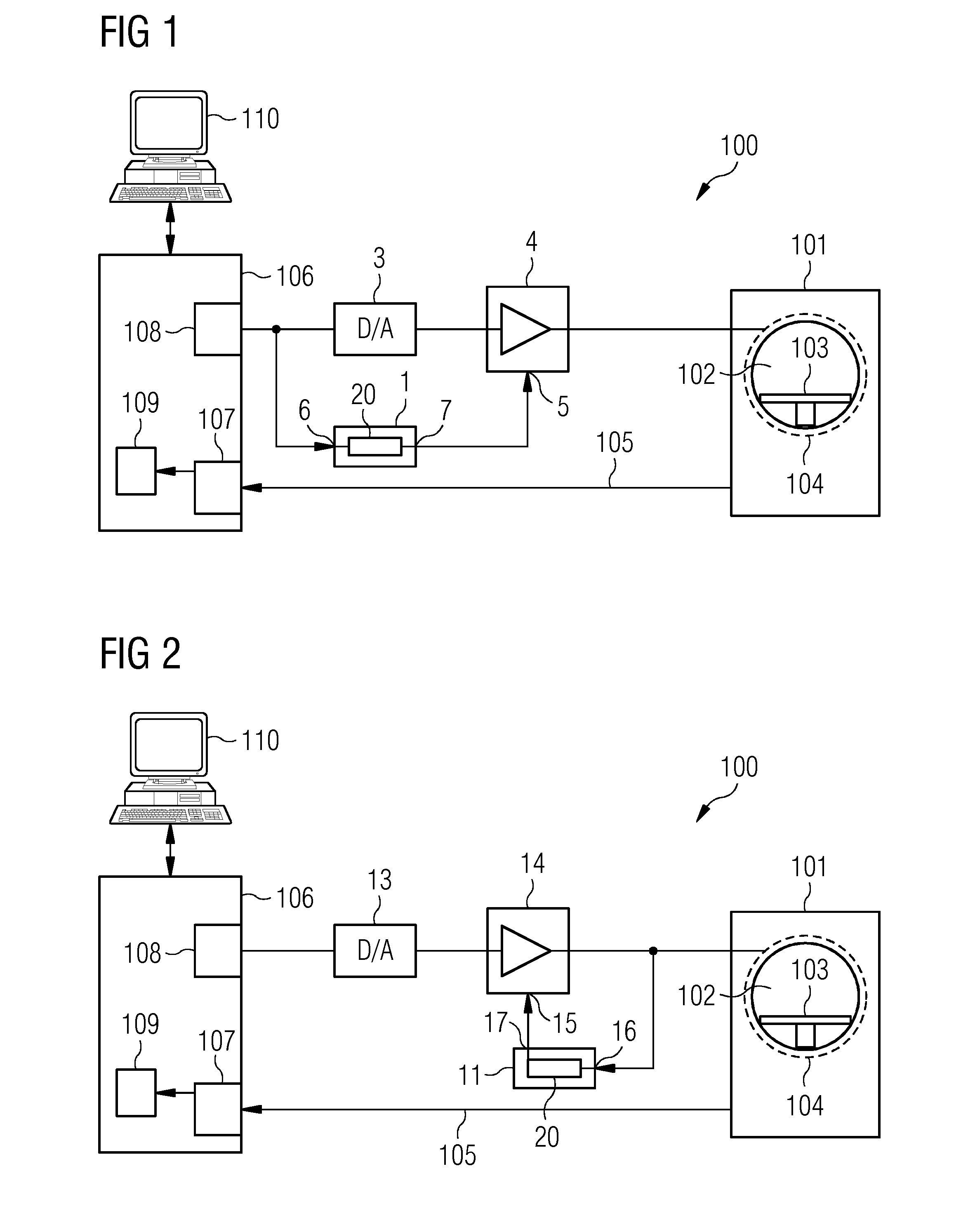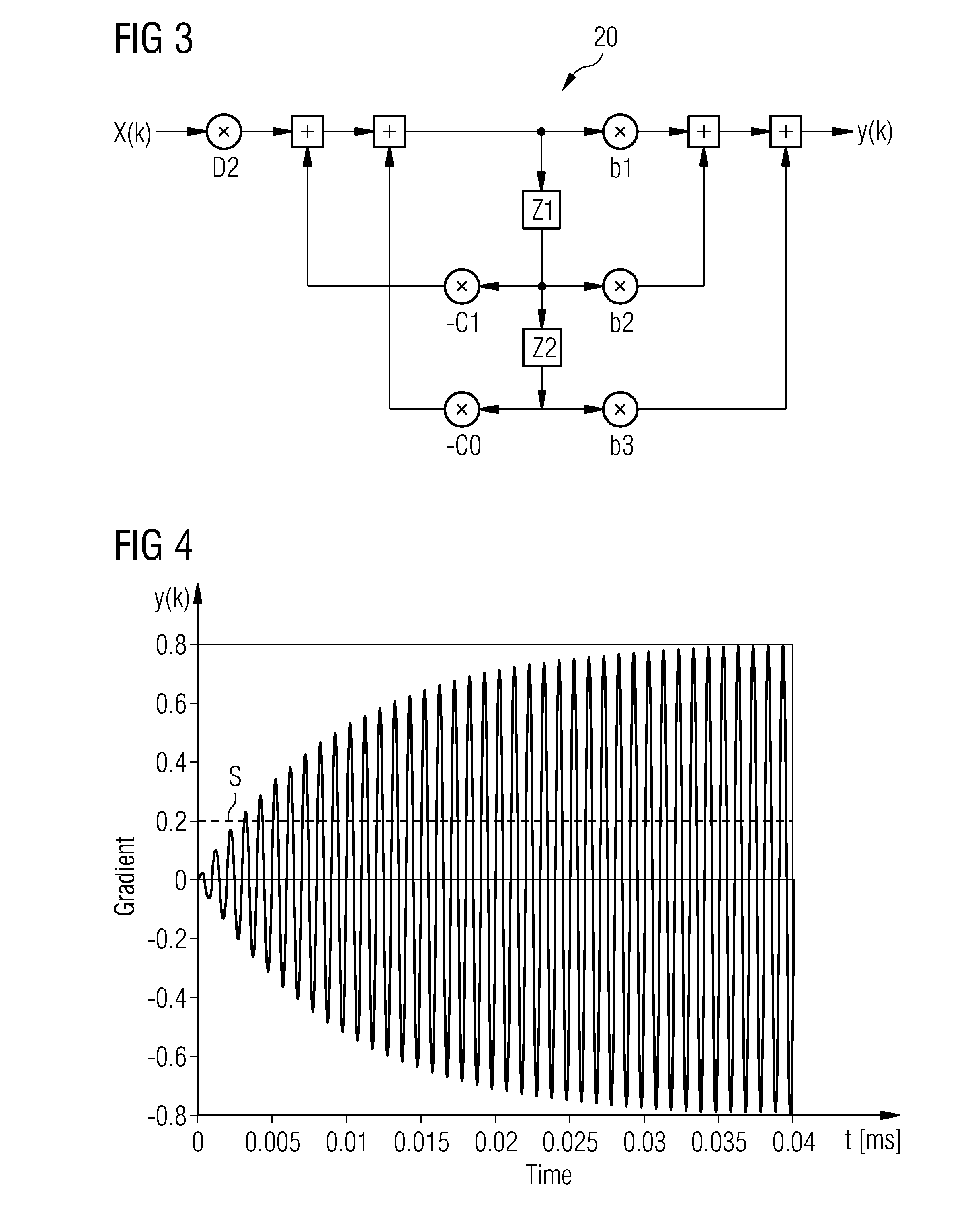Method for Operating a Coil and a Monitoring Module
a monitoring module and coil technology, applied in the field of coil operation, can solve the problems of no damage to the tomography system nor the patient, no longer acceptable patient noise, and known loud noise, and achieve the effect of reducing the overshoot characteristics
- Summary
- Abstract
- Description
- Claims
- Application Information
AI Technical Summary
Benefits of technology
Problems solved by technology
Method used
Image
Examples
Embodiment Construction
[0057]FIG. 1 shows a schematic block diagram of one embodiment of a magnetic resonance tomography system 100. A monitoring module 1 is used in the magnetic resonance tomography system 100. Even though the following description refers to a magnetic resonance tomography system, the invention is not restricted to this application situation.
[0058]A central part of the magnetic resonance tomography system 100 is a normal scanner 101, in which a patient or experimentee (not shown) may be positioned for an investigation on a table 103 in a measurement space 102 (e.g., a “patient tunnel”). This representation is to be understood as not restrictive. The method and the monitoring module may be used in magnetic resonance tomography systems of the open type, in which the investigation space is of a more open construction.
[0059]The scanner 101 has a basic magnetic field system for the purpose of applying, to the measurement space 102, a basic magnetic field together with a gradient coil system 1...
PUM
 Login to View More
Login to View More Abstract
Description
Claims
Application Information
 Login to View More
Login to View More - R&D
- Intellectual Property
- Life Sciences
- Materials
- Tech Scout
- Unparalleled Data Quality
- Higher Quality Content
- 60% Fewer Hallucinations
Browse by: Latest US Patents, China's latest patents, Technical Efficacy Thesaurus, Application Domain, Technology Topic, Popular Technical Reports.
© 2025 PatSnap. All rights reserved.Legal|Privacy policy|Modern Slavery Act Transparency Statement|Sitemap|About US| Contact US: help@patsnap.com



